W. Gregory Monahan, Professor Emeritus
Eastern Oregon University*
The Cévennes mountains in France have served as the setting for films and television programs over the years. Their remote beauty, green and lush in the summer, barren and forbidding in the winter, offers filmmakers a variety of landscapes, while the relative lack of roads, telephone poles, or other signs of contemporary life make historical films easier and less expensive to produce. Thus, it is no surprise that the directors of the two films under review, one very recent, the other much older, found it ideal for their movies. Likewise, the Cévennes have long had a reputation for resistance to central authority, from the Camisard rebellion against Louis XIV in the early eighteenth century, to their resistance during the Revolution, and more recently as refuge for the maquis during the Second World War. It is a region where people know how to keep secrets, and thus propitious for rebellion.
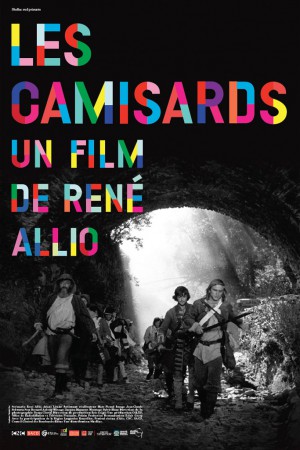 Allio’s Les Camisards could hardly have been filmed anywhere else since the rebellion took place in the Cévennes. First released in 1972 and then a decade later on VHS, the film has long needed a proper DVD version. The restored film is certainly impressive to watch, but regrettably it currently has no subtitles, and is therefore complicated to show in class. It is good nonetheless to have the movie back in circulation. Allio concentrated his film on the three short months that followed the assassination of the region’s foremost Catholic persecutor the abbé du Chaila in July 1702, which started the rebellion. Shooting on the very spot where events unfolded, Allio follows the exploits of the first rebel band, led by the military veteran Gédeon Laporte and the Protestant prophet Abraham Mazel, as they attack churches and fight royal detachments. Their aim was to push the Crown to restore the rights of Protestants to practice their religion, lost even before the Revocation of the Edict of Nantes.The film ends with the death of Laporte at the battle of Thémelac in October 1702, the display of his severed head (and those of some followers) on a bridge near Anduze, and the determination of the rebels to continue his work. They indeed kept the rebellion alive for another year and a half.
Allio’s Les Camisards could hardly have been filmed anywhere else since the rebellion took place in the Cévennes. First released in 1972 and then a decade later on VHS, the film has long needed a proper DVD version. The restored film is certainly impressive to watch, but regrettably it currently has no subtitles, and is therefore complicated to show in class. It is good nonetheless to have the movie back in circulation. Allio concentrated his film on the three short months that followed the assassination of the region’s foremost Catholic persecutor the abbé du Chaila in July 1702, which started the rebellion. Shooting on the very spot where events unfolded, Allio follows the exploits of the first rebel band, led by the military veteran Gédeon Laporte and the Protestant prophet Abraham Mazel, as they attack churches and fight royal detachments. Their aim was to push the Crown to restore the rights of Protestants to practice their religion, lost even before the Revocation of the Edict of Nantes.The film ends with the death of Laporte at the battle of Thémelac in October 1702, the display of his severed head (and those of some followers) on a bridge near Anduze, and the determination of the rebels to continue his work. They indeed kept the rebellion alive for another year and a half.
What makes Allio’s film valuable to historians, aside from its setting, is its conscious effort to remain true to the sources, in particular Mazel’s memoirs, written during his exile in England.To cite one example, Allio very realistically dramatizes Mazel’s prophetic vision, as he is seized by the spirit, falls to the ground, and in agonized gasps warns his terrified audience to repent, to plead for forgiveness and to destroy the devil’s church. These trances had many witnesses since inspired prophets guided the rebellion. The director also shows the important role played by women in the rebellion, mainly as suppliers, but occasionally also as participants. He 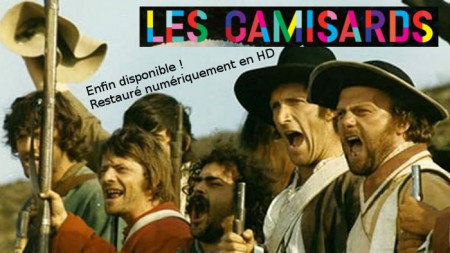 the battle psalm (no. 68) sung by the rebels to frighten their enemies. Occasionally too the rebels managed to trick their opponents by stealing their uniforms after an ambush and using them to good, if deadly, effect.
the battle psalm (no. 68) sung by the rebels to frighten their enemies. Occasionally too the rebels managed to trick their opponents by stealing their uniforms after an ambush and using them to good, if deadly, effect.
The director however took liberties for dramatic effect, attributing a revenge killing to Laporte’s troop although it was perpetrated by another band led by the more famous Jean Cavalier. Likewise, he turned the early skirmish at Champ Domergue in September 1702 into a Camisard victory, although the royal forces won the day. The deadly French captain Alexandre Poul comes off as a bon vivant, hesitant to lead his men. In this, he confused Poul, who never hesitated and was a brave if vicious commander, with the later royal commander Montrevel, who did rather enjoy the aristocratic good life.
Allio was also a Marxist and enjoyed contrasting the simple, honest, egalitarian rebels eating and making love in the pure and sunny Cévenol countryside with the privileged, bewigged and corrupt nobility who stuffied themselves with exotic foods at ornate tables and dismissed the rebels as worthless peasant fanatics. Such license is understandable because the rebels did practice a rough egalitarianism, did often eat, marry, and live in the woods, and the privileged royal officers did dismiss them as worthless fanatics. A more significant weakness in Allio’s film is its narrow time frame, and his failure to explain that the rebellion largely failed, that Protestants did not get back their rights for a century, and that many more would die before the monarchy finally extricated itself from the conflict by granting amnesties. That said, if the film had English subtitles (or if students were easily conversant in French) it would make a worthy subject for discussion in classes on the Old Regime.
Editorial note: The entire film is available on YouTube.
Arnaud de Pallières’s Michael Kohlhaas is very different from Allio’s Les Camisards. His is the second film drawn from the novella of the same title published in 1808 by Heinrich von Kleist, itself based on the exploits of a real mid-sixteenth-century German rebel named Hans Kohlhase (on whose story E. L. Doctorow loosely based his1976 Ragtime). Thus, two “texts” can inspire a film adaptation: the legend of the “real” Hans Kohlhase, or von Kleist’s fictionalization of those stories. Can the real Kohlhase or Kohlhaas please stand up?
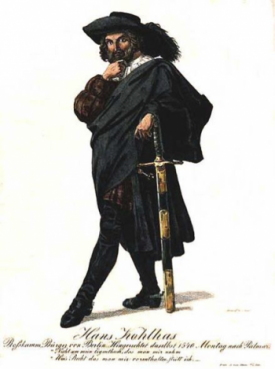
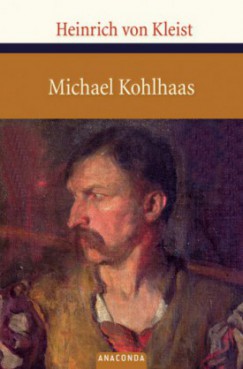 The historical Hans Kohlhase was a merchant from sixteenth-century Brandenburg who traveled in 1532 to a trade fair in Leipzig in Saxony. Robbed of his goods by the servants of a Junker noble (Gunter von Zasonwitz), he refused to pay the extortionary price demanded by the nobleman for their return. Failing to get satisfaction in the Saxon courts, he gathered a gang and rampaged across Saxony for the better part of six years, despite a letter from none other than Martin Luther urging him to stop. Sallying forth from the relative safety of Saxony, he made the fatal mistake of starting to operate in his native state as well. He was captured in Brandenburg in 1540 and broken on the wheel in Berlin that March.
The historical Hans Kohlhase was a merchant from sixteenth-century Brandenburg who traveled in 1532 to a trade fair in Leipzig in Saxony. Robbed of his goods by the servants of a Junker noble (Gunter von Zasonwitz), he refused to pay the extortionary price demanded by the nobleman for their return. Failing to get satisfaction in the Saxon courts, he gathered a gang and rampaged across Saxony for the better part of six years, despite a letter from none other than Martin Luther urging him to stop. Sallying forth from the relative safety of Saxony, he made the fatal mistake of starting to operate in his native state as well. He was captured in Brandenburg in 1540 and broken on the wheel in Berlin that March.
Von Kleist was attracted to the story of Kohlhase, seeing him as a victim of noble oppression, and he added several elements to the story. In his telling, “Michael Kohlhaas” became a horse dealer who lost two fine horses in an extortion scheme by the above-mentioned villainous nobleman, now renamed von Tronka. In this version, after von Tronka used his influence to block the merchant’s case in the courts, Kohlhaas’s wife confronted the wretch only to be killed by the lord’s servants. All these injustices turned the peaceful merchant into a rebel who gathered like-minded followers and sought justice by pillaging the properties of nobles. Likewise, when the horse trader-turned-rebel received Luther’s letter, von Kleist has him go see Luther in person to plead his case, and Luther promises to try to get him a fair hearing. Finally, in the fictional version, Kohlhaas turns himself in to the authorities, receives two fine horses as compensation for his claim, watches the offending noble arrested and sentenced to two years’ confinement. He then surrendered himself willingly to the judges and was beheaded rather than broken on the wheel.
In the first film version, made in 1969 and titled Michael Kohlhaas: Der Rebell, German director Volker Schlondorff retained most of von Kleist’s plot—horse dealer, deceased spouse, letter from Luther, obtained justice in the end—and even overlaid the opening credits with scenes from the Parisian riots of 1968 to underline his portrayal of a revolutionary hero seeking justice. Interestingly, he rejected von Kleist’s less brutal execution, replacing it with the historically documented one, having David Warner’s Kohlhaas look beatifically at his beautiful horses roaming free on the fields as his broken body is raised on the wheel. This version’s focus on justice, both individual and social, if not particularly subtle, is fairly straightforward.
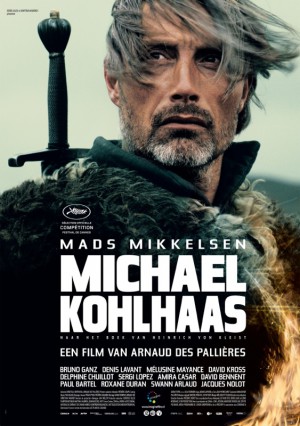 Enter the French director Arnaud des Pallières, who decided to situate the story in the Cévennes and have his trader be a devout Huguenot horse trader. The action is still set in the sixteenth century, in the first half rather than the second, which is a bit problematic, since the Cévennes were not converted to the Protestant confession until the 1560s at the earliest. Making the story French means losing Luther and substituting an unnamed “theologian.” Despite these idiosyncracies, des Pallières hews more closely to von Kleist’s story than Schlondorff, detailing the bloody death of the wife, the efforts at revenge, a personal interview with a theologian, the restitution of his horses, the sentencing of the villainous French baron to two years of confinement (even moving the shackles directly from Kohlhaas to the baron), and the more humane method of execution.
Enter the French director Arnaud des Pallières, who decided to situate the story in the Cévennes and have his trader be a devout Huguenot horse trader. The action is still set in the sixteenth century, in the first half rather than the second, which is a bit problematic, since the Cévennes were not converted to the Protestant confession until the 1560s at the earliest. Making the story French means losing Luther and substituting an unnamed “theologian.” Despite these idiosyncracies, des Pallières hews more closely to von Kleist’s story than Schlondorff, detailing the bloody death of the wife, the efforts at revenge, a personal interview with a theologian, the restitution of his horses, the sentencing of the villainous French baron to two years of confinement (even moving the shackles directly from Kohlhaas to the baron), and the more humane method of execution.
The decision to cast the very fine Danish actor Mads Mikkelsen in the leading role is an interesting one. His French is accented but clear, although he largely maintains a stoic silence through much of the film, perhaps to keep his own nationality from distracting French audiences (though bizarrely, toward the end of the movie, he has a brief conversation with his young pastor in German, an oddity that is never explained). That said, his conversation (in French) with the older theologian standing in for Luther is far more realistic than the one von Kleist contrived in his novella. In the film, the theologian earnestly calls on Kohlhaas to turn to God for justice through resignation, forgiveness, and prayer rather than violence, in much the same way that Luther beseeched the peasants to do during their rebellion in 1525. Kohlhaas is contrite, but insists that he must have justice and that the baron must return two horses in excellent condition “with his own hands.” When the rebel leader then asks the theologian to accept his confession (something that no true sacrament-hating French Calvinist of later years would have considered!), the theologian turns him down, just as Luther did in the novella.
Alas, von Kleist’s story does not transpose easily to a French setting. While episodes of noble extortion were certainly not unusual, the religious conflict is somewhat anachronistic. Not only does a theologian wander the Cévennes in first half of the sixteenth century, but also a French Bible is available in paperback, while a young pastor, good at languages, is apparently free to preach and perform funerals. Des Pallières tries to stamp the story as French by introducing no less a personage than the great Renaissance princess Marguerite de Navarre, sister of Francis I, begetter of the Bourbon line, and friend, if not necessarily convert, to French Reform. For the purposes of the plot, she is related to the villainous baron, resides for some mysterious reason in the Cévennes rather than her native Béarn, and when she discovers the injustice Kohlhaas has suffered, is prepared to amnesty him and his followers provided they lay down their arms and return to their homes. When two of Kohlhaas’s men fail to do that, she rescinds the amnesty, but insures Kohlhaas justice, as long as he is prepared to answer for his acts before a royal court. Of course, it is unlikely that even the most compassionate of rulers in that period would have granted him the noble privilege of decapitation rather than hanging, but that is perhaps to pick nits.
And the Cévennes? Aside from the opportunity to present the region as remote, forbidding and beautiful in a barren kind of way (there is a lot of traveling to and fro on horseback to show it off), one is at a loss to understand why the director situated his film there. Béarn would, perhaps have made more sense, especially with Marguerite de Navarre wandering about the countryside. It appears that he received some financial assistance from Languedoc-Roussillon, so perhaps that explains his choice, along with the reputation of the Cévennes as a Protestant bastion and rebellious region, albeit not in the first half of the sixteenth century.
How useful is the film to teachers of French or European history? The answer, I fear, is not much. The movie is frankly a bit of a slog, with endless scenes of travel and overlong silences punctuated by meaningful stares. The lighting is natural and it is often so dark that it is difficult to see the characters. While French subtitles (designed for the hearing-impaired) are available, the French DVD has no English subtitles, although a subtitled version must exist since the film has shown in American theaters. The most troubling aspect of the film, however, lies in its lack of focus. Unlike the earlier German version, it is never clear exactly what this French one wants to be. Is it a film about social injustice? Religious freedom? Individual revenge? What motivates other men to follow a leader who apparently just wants his horses back? At no point does the film tell us if or how the offending baron has also harmed the large group of men who seem to appear out of nowhere and suddenly decide that this horse trader would make a good rebel leader. At one point, Kohlhaas does address them: “We do not take. We pay. We do not borrow. We buy.” If so, what are they after? Even Kohlhaas’s daughter wonders why he is doing this. Is it for the horses? For his wife? All she gets in answer is stiff-lipped silence. Presumably, this is supposed to lend gravity and solemnity with a self-evident meaning. If so, the answer was never clear to me.
The real Hans Kohlhase apparently suffered no qualms about “taking,” since he pillaged and stole his way through Saxony for some six years in the 1530s. His story is certainly worthy of attention. I could find no monograph on him published since 1864, although a number of works published since refer to his story. He would no doubt be mystified by the changes made to his life, first embellished by a German nobleman three centuries later and then turned into fiction films two centuries after that. The latest French version makes us share in his perplexity. Yet, whatever their strengths and faults, both Les Camisards and Michael Kohlhaas offer a huge silver lining. They offer those who have never traveled there the opportunity to view one of France’s most impressive, magical, and least visited places. If the filmmakers motivate their audiences to experience the beauty of the Cévennes in person, then these two movies will have performed a great service. One can hope that many more filmmakers will find in those remote mountains the setting for their films. There are, after all, many more stories to tell.
*W. Gregory Monahan is author of Let God Arise: The War and Rebellion of the Camisards, published this year by Oxford University Press.
René Allio, Director, Les Camisards [The French Calvinists], 1972, Color, 100 min, France, Office de Radiodiffusion Télévision Française (ORTF), Polfilm, Polsim Production.
Arnaud des Pallières, Director, Michael Kohlhaas [Age of Uprising: The Legend of Michael Kohlhaas] 2013, Color, 122 min., France, Germany, Les Films d’ici, Looks Filmproduktionen, Hérodiade.